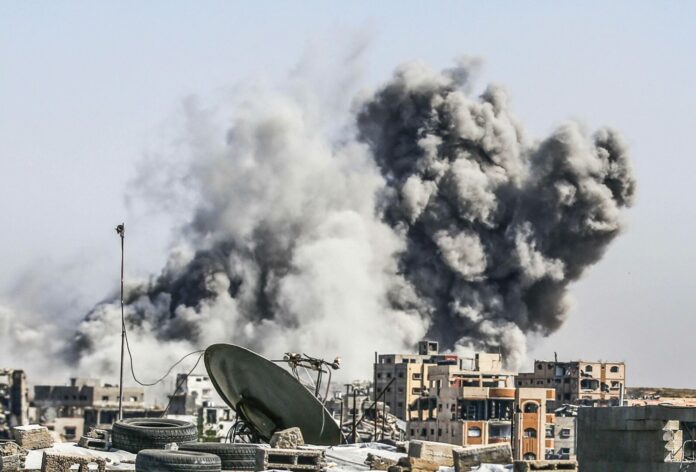ROMA (ITALPRESS) – “We are closer than ever to a ceasefire agreement in the Gaza Strip” between Israel and the Palestinian armed group Hamas, “on the eve of Israeli Prime Minister Benjamin Netanyahu’s visit to Washington. I believe we are at the beginning of a process to forge a new Middle East.”
This was stated by Sima Shine, a researcher and former director of the “Iran and the Shiite Axis” research program at the Institute for National Security Studies (INSS), during the webinar “Crisis in the Middle East: geopolitical, security and energy implications of the Israel-Iran confrontation”, organized by the Eni Enrico Mattei Foundation.
The ceasefire agreement in Gaza and the release of around 50 hostages “has the support of the opposition, even if some members of the governing coalition will leave,” she added, referring to reports that far-right ministers Itamar Ben Gvir and Bezalel Smotrich are opposed to the agreement.
Shine, who was head of the Research and Evaluation Division of the Mossad from 2003 to 2007, supports “the ceasefire and the release of the hostages, as well as a new government to replace Hamas,” made up of officials from the Palestinian National Authority and with the involvement of Arab states, “alongside a gradual disarmament process for Hamas.”
“It’s hard to understand from Rome what happened on October 7: we are living through a trauma. It wasn’t a war; it was something different from anything Israel had ever experienced before. No one in Israel wants to see Hamas in power in Gaza. It’s impossible to live near the Gaza border if Hamas is there,” she added, urging greater international involvement to help the population return to kibbutzim near the Gaza barrier.
The Hamas terrorist attack on October 7, 2023, is linked to Israel’s operation against nuclear and missile sites in Iran, launched on June 13. “Without training and arms supplied by Iran, October 7 wouldn’t have happened. The Iranian Revolutionary Guards have worked for years to plan a multi-front war against Israel using their proxies, Hezbollah and Hamas,” Shine said.
This role of Iran in the attack on Israel served as the “strategic motivation” for the 12-day operation launched by Tel Aviv. Other factors that pushed the Netanyahu government to strike Iran on June 13 included “concern that time was being wasted with U.S.-Iran nuclear talks,” a fear supported by “the latest report from the International Atomic Energy Agency (IAEA),” as well as “advancements in ballistic missile production,” and a “window of opportunity created by the collapse of Iran’s proxies and its long-built deterrence capability.”
Finally, Shine commented on the potential normalization of diplomatic relations between Tel Aviv and Riyadh. “The possibility is always on the table. Saudi Arabia does not want the war to continue and is terrified of being drawn into it. There are contacts, but I don’t see full normalization while the war in Gaza is ongoing. Israel understands this,” she said.
The expert concluded by describing former President Trump’s efforts as “important steps toward a future of peace” in the Middle East, where “Hamas, with October 7, sought to block all of that.”
– Photo IPA Agency –
(ITALPRESS)















